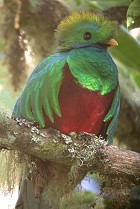So I think I have finally figured out this whole blog thing...
I will try to post at least once a week to update you all on my adventures in Guatemala! I have now been in Xela for over a month and I can't believe how fast it has gone already. I am with a program called Somos Hermanos, which focuses on intensive spanish classes, learning about the Guatemalan culture, and volunteering in health clinics. For those of you wondering how on earth you pronounce Xela, it is pronounced as
'Shay-La.' You also might be wondering how the name Xela is derived from Quetzaltenango. Well, Xelajú
'Shay-La-Who' is the indigenous name for Quetzaltenango, which is shorten to just Xela. Muy
fácil! (I will occasionally throw in some Spanish so you can learn it as well.)
 |
| Driving into Xela |
 |
| El Cavario Cemetery in Xela |
Well to begin, I will tell you a little about Xela. Xela is the second largest city in Guatemala but it feels pretty quaint. The indigenous population is over 60% and many call it The Capital of the Mayas. Xela is in the mountains at almost 8,000 feet so it is beautiful during the day but can get pretty cool at night especially since the houses do not have insulation. Quetzaltenango became the city's official name during the colonial times, and was considered "the place of the quetzal bird." The quetzal bird has a beautiful green/blue body with a bright red chest. The quetzal is Guatemala's national bird, and its image can be found on the flag, coat of arms and it is the name of the currency. Xela is known for having many spanish schools and therefore many foreigners who come to learn spanish. There are several cafes, tiendas (small stores), bars, bookstores and restaurants.
 |
| Quetzal |
I am living with a wonderful host family that consists of the host mom, Iris Escobar, her two adult sons, Fernando and Henry, each of their wives, Adrienne and Orchilia and each of their sons, Rodrigo(4 yrs old) and Diego (7 yrs old). They are all extremely nice, especially Iris who has so much patience when I'm trying to speak but it all comes out as jibberish. The little boys are adorable and have so much energy. After school all they want to do is play transformers (Bumblebee is Rodrigo's favorite) or play with plastic animals, which they have their own unique sounds for each one. It is quite entertaining even-though I don't understand a word they are saying because they talk so fast. I just reply with a "Si" and a smile.
 |
| My little host brothers - Rodrigo and Diego |
The past month I have been taking spanish classes for 4 hours every monday through friday morning. The classes are taught in a beautiful courtyard at the spanish school, "El Mundo en Espanol." Our classes are one on one, so its very nice to work at your own pace and focus on the things you have the most trouble with. Every two weeks we take a test to move to the next level and we also switch teachers since they each have their own way of teaching as well as speaking. There are several students at the school (not including the other 12 that are part of Somos Hermanos as well) from all over. I have met students from Germany, Canada, and Washington. The school is actually ran out of a home, so it is quite a lively place all the time with people coming in and out constantly.
 |
| Fountain in the backyard of the school |
 |
| Our classroom :) |
When we are not in class, our afternoons are filled with conferences and films about various topics, reading articles that go along with the topic of the conferences and films and we also occasionally have free afternoons which I usually end up going to a cafe and studying. In later posts I will touch more on the films and conferences. On the weekends we usually have trips planned. Last weekend we went to La Tilapita, which is a small beach close to the border of Mexico. It was absolutely wonderful and it was a nice relaxing trip. We spent the weekend lounging at the beach and swimming in the water and also spending time at the small hotel's pool. The beach was amazing at night because you could see the milky way and there were little purple bio-luminescent bacteria in the ocean that would light up occasionally.
 |
| Tilapita |
 |
| Boat ride into Tilapita |
This weekend we are going to El Lago de Atitlan, which is about 2.5 hours away from Xela. We are going to take chicken buses there (old US school buses that have been painted with many colors and are the Kings of the roads) so I will let you know how the experience goes!
Until next time!

















